Quickstart (On-Premise)
On-Premise deployment allows you to keep BladePipe and all your data in your own local environment. This page describes how to move data using BladePipe On-Premise in just a few steps.
Step 1: Install BladePipe
- Follow the instructions in Install All-In-One (Binary) to deploy BladePipe.
- Follow the instructions in Install a Worker to add a Worker.
Step 2: Add a DataSource
Here we use a self-managed MySQL DataSource as an example. For more details, see Add Self-managed DataSource. For the other supported DataSources, see Supported DataSources.
- In the top navigation bar, click DataSource.
- In the upper right corner of the page, click Add DataSource.
- Configure the following information:
- Deployment: Choose Self Maintenance.
- Type: Choose the datasource type. Here we choose MySQL.
- Address: Fill out the endpoint to connect to the DataSource.
- Account & Password: Fill out the username and password.
- Click Test Connection to verify the connection.
- Click Add DataSource.
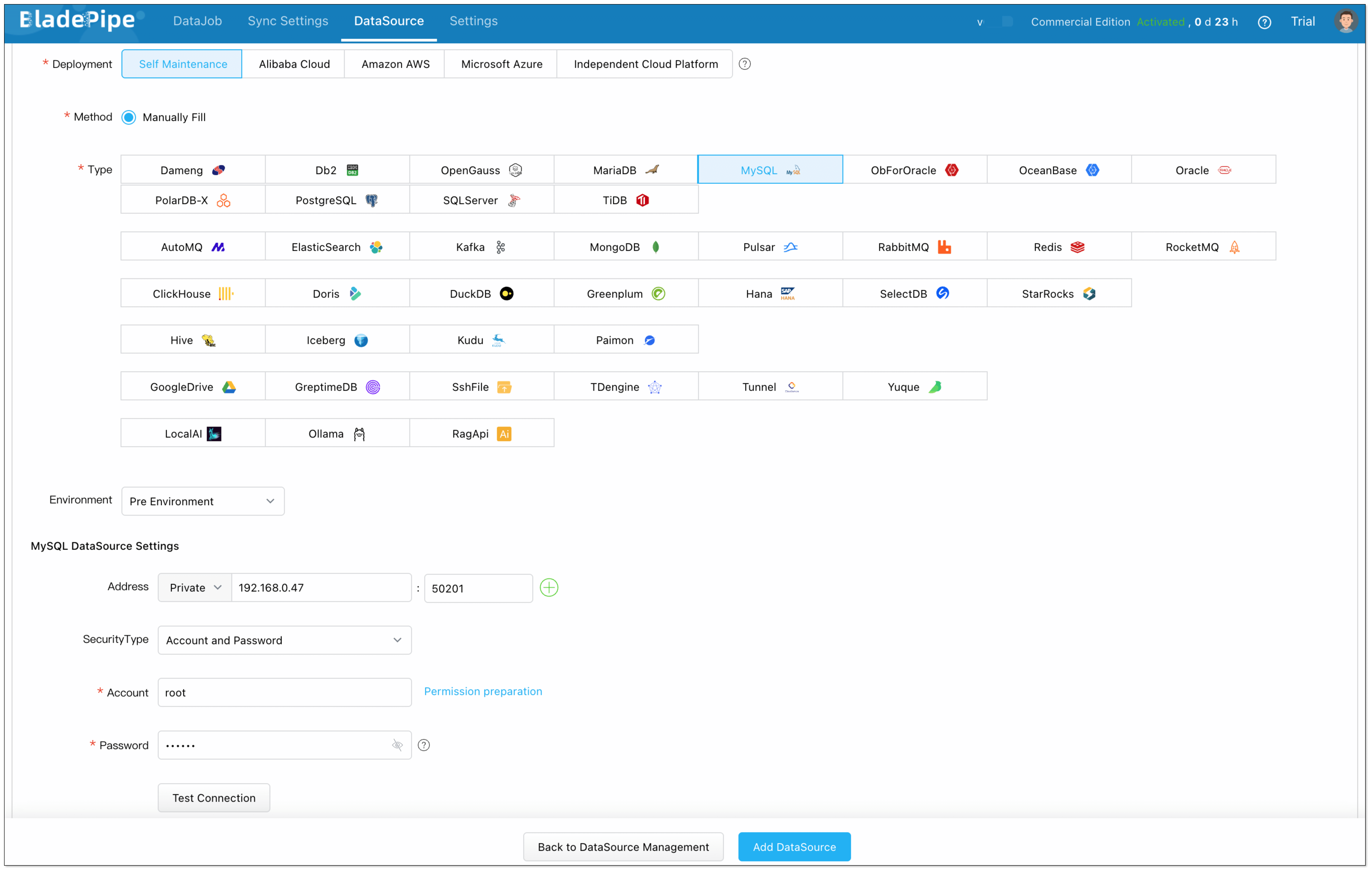
Step 3: Create a DataJob
Here we take a MySQL-MySQL data synchronization as an example. For more details, see Create General DataJob.
- In BladePipe, click DataJob in the top navigation bar.
- In the upper right corner, click Create DataJob.
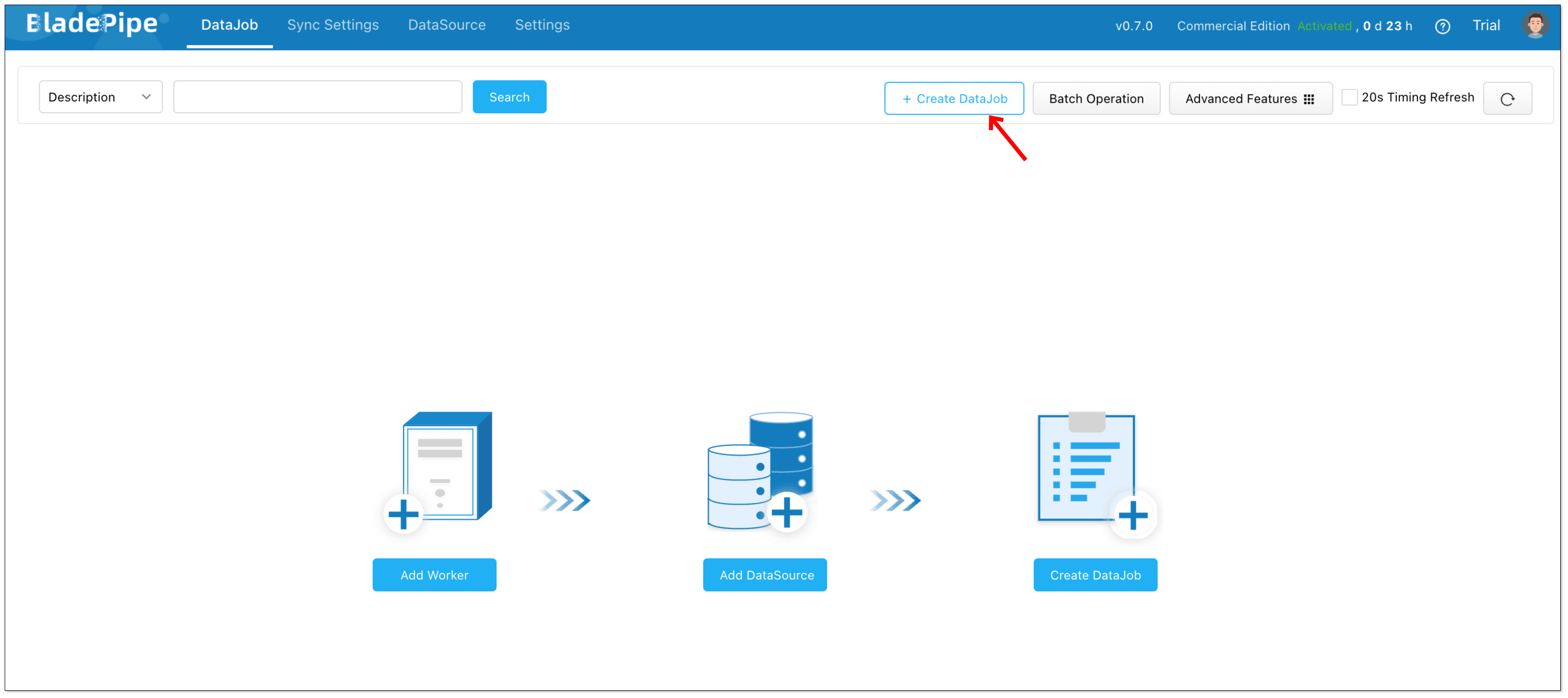
- Select the added MySQL instance as both the Source and Target, and click Test Connection.
- Choose the databases to be synchronized, and click Next Step.
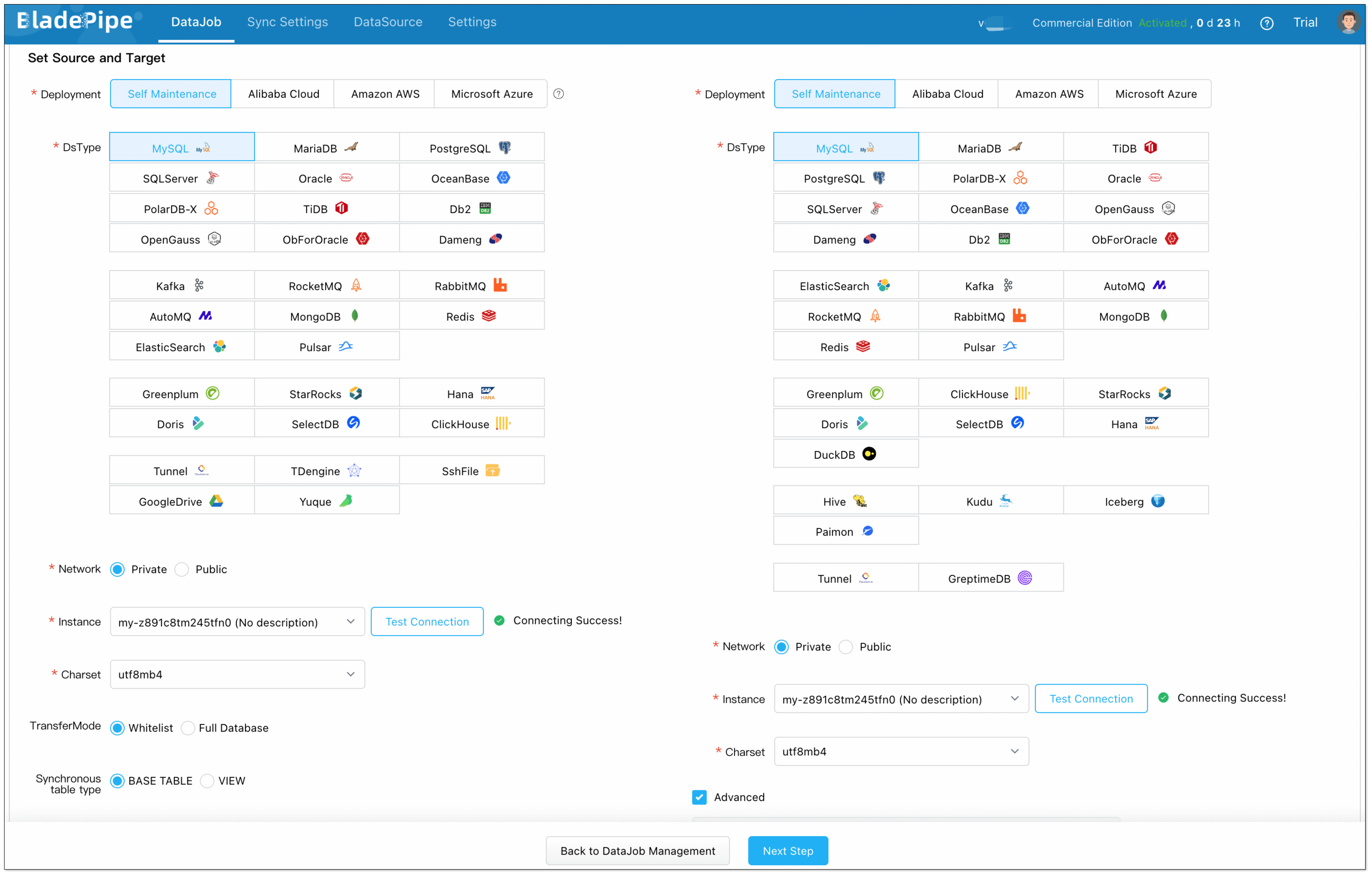
- Choose Incremental as the DataJob type, and select Full Data. Then click Next Step.
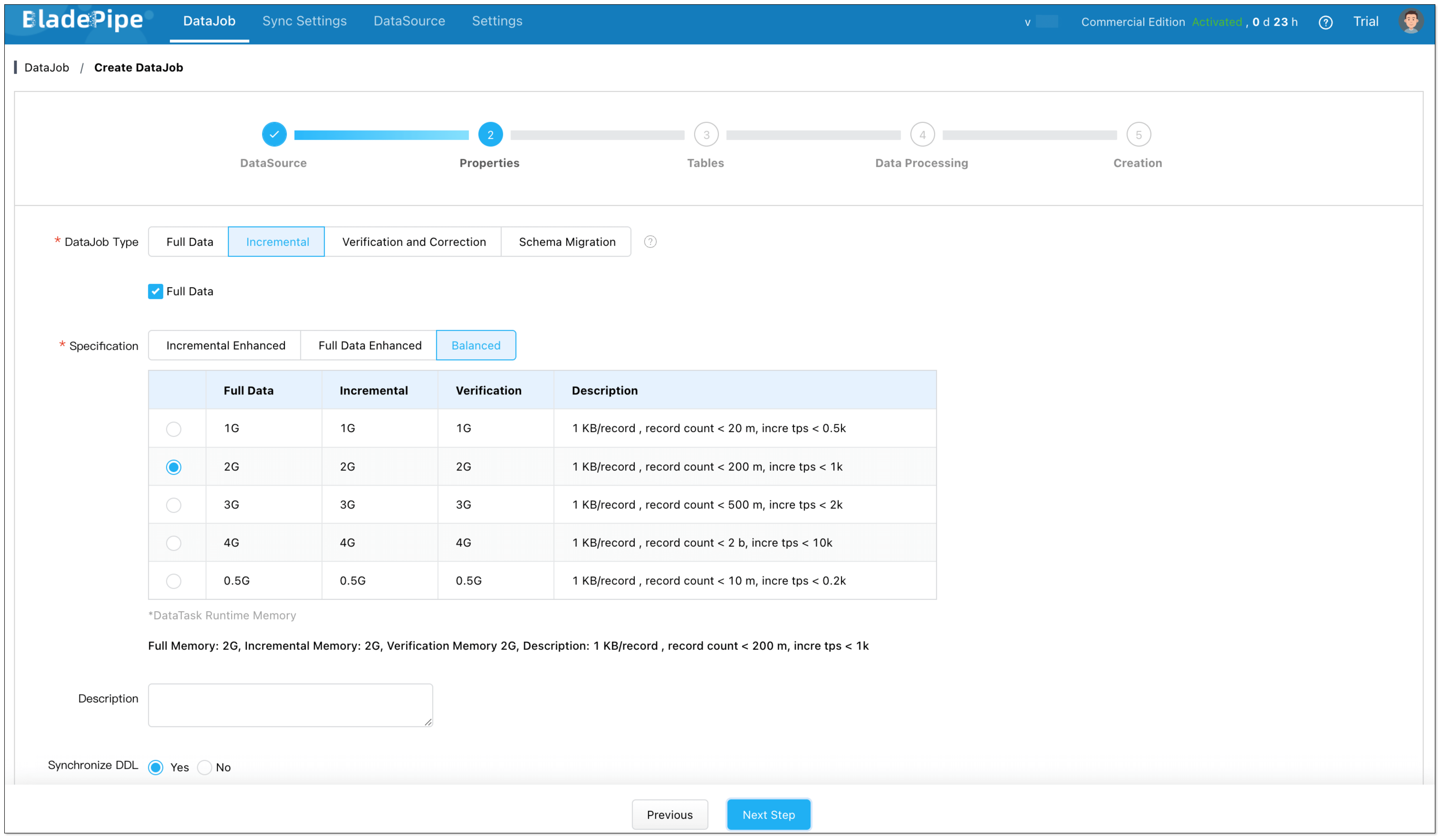
- Choose the tables you want to sync, then click Next Step.
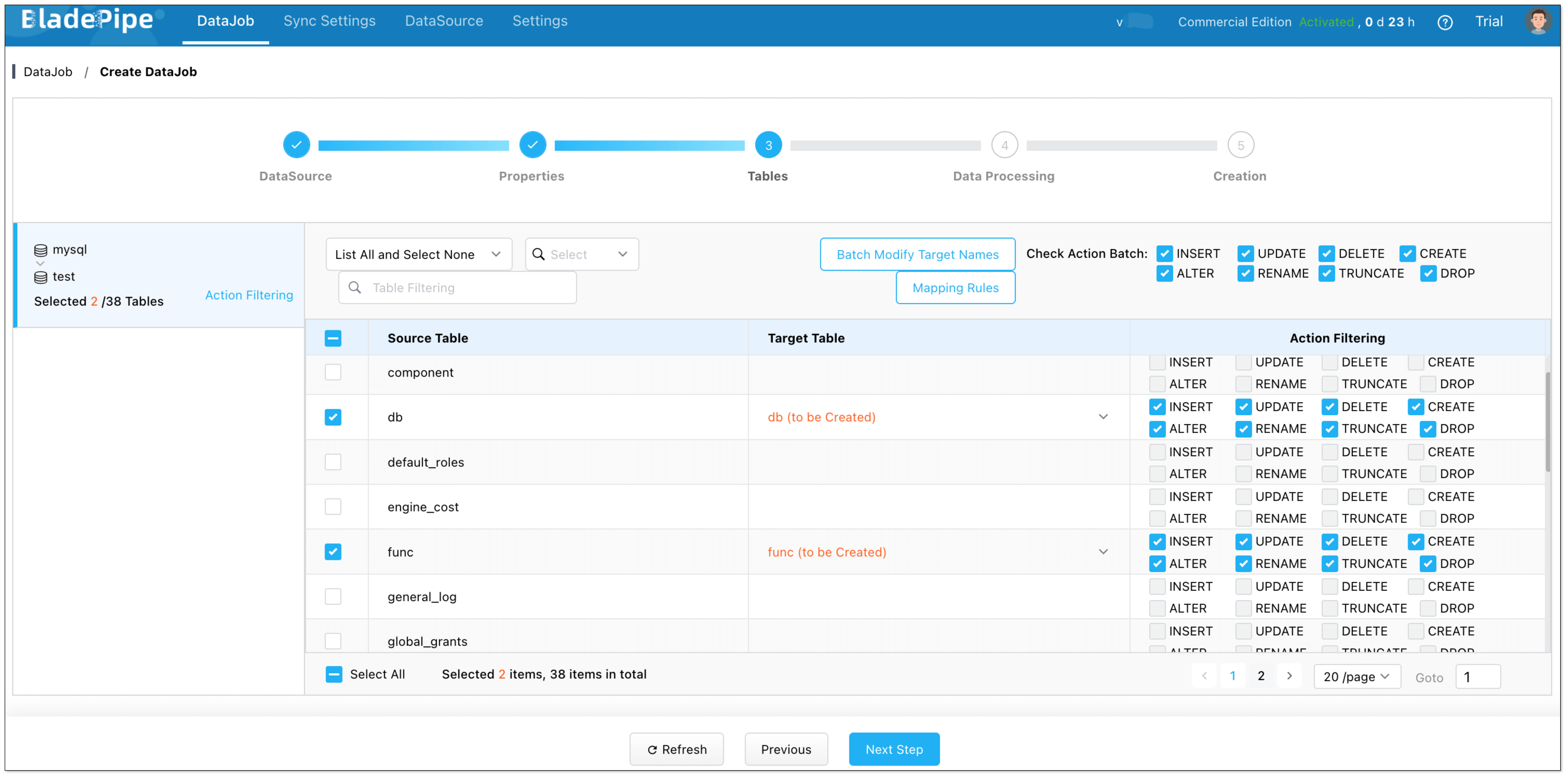
- Select all columns, then click Next Step.
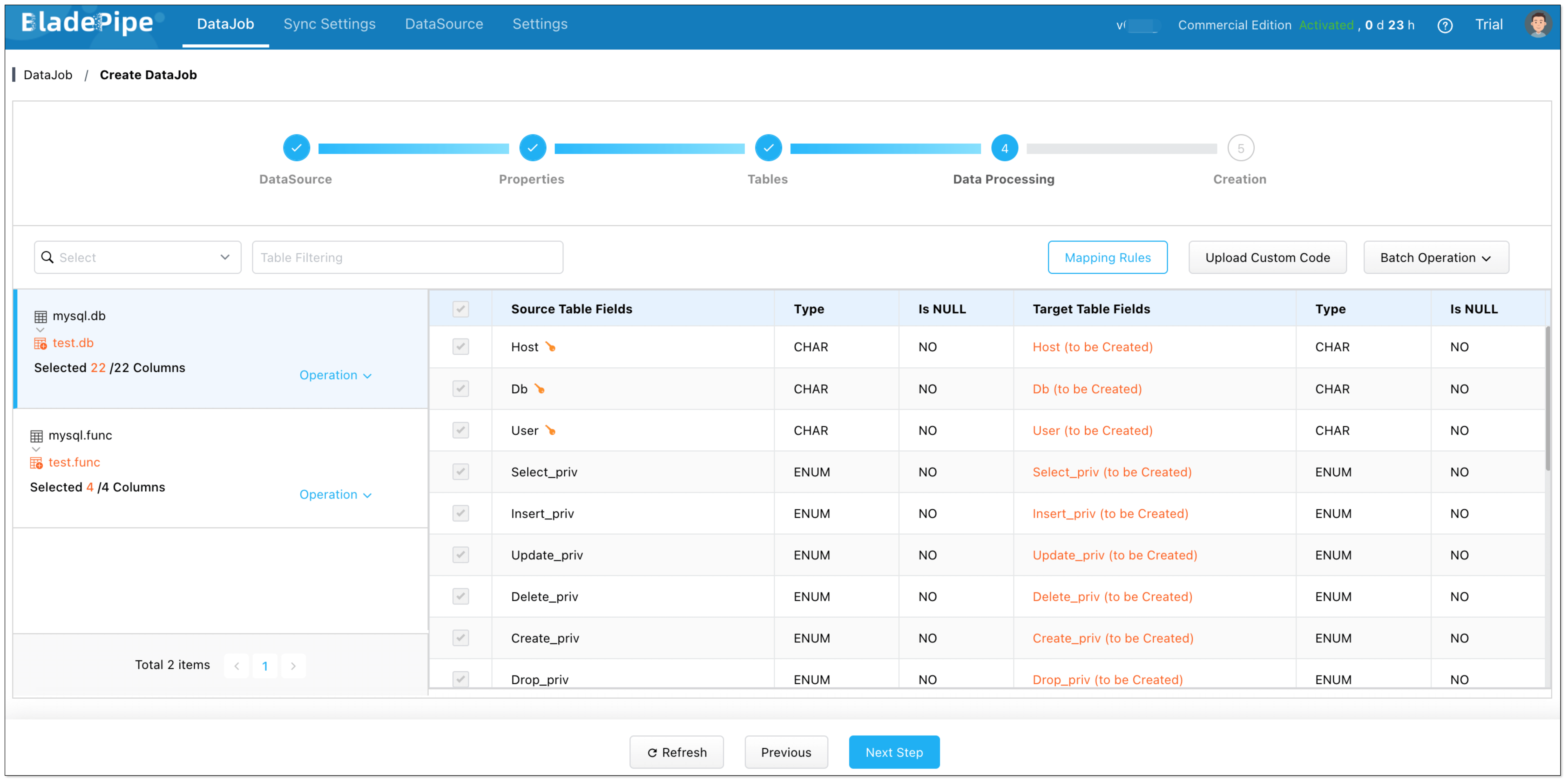
- Click Create DataJob.
- Go to the DataJob list page to check the progress of the DataJob.

Step 4: Verify the Data
- Insert, update, and delete data in the source database.
- Check whether the data in the target database is consistent with the data in the source.